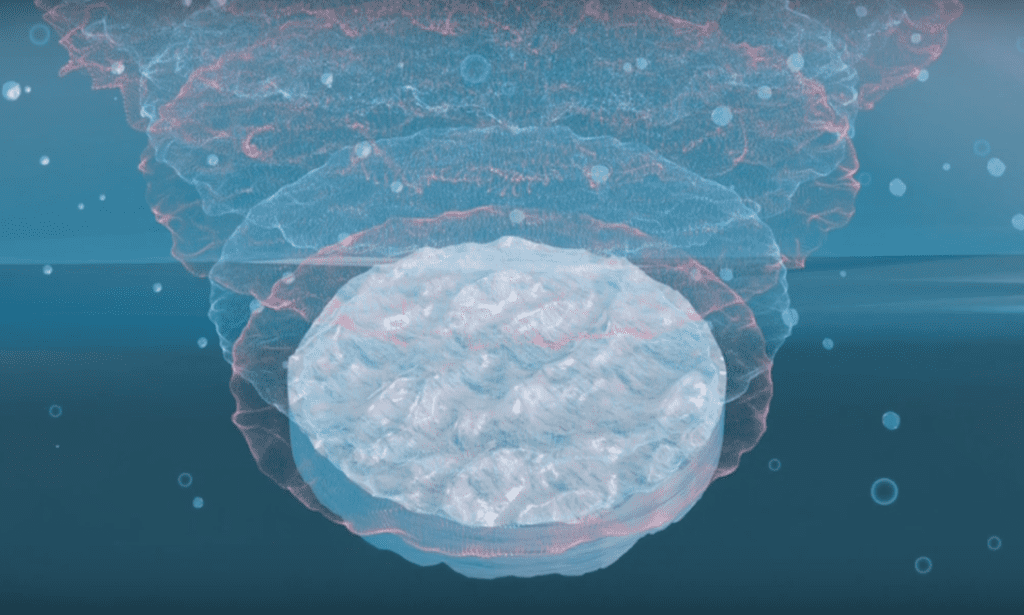Researchers working on acoustic holograms have created a new sonic tractor beam system for less than it costs to get lunch.

A little bit — and I mean that literally — of Star Trek has just passed into the real world. Scientists have developed a sonic system which can push or pull on objects just like the show’s famous tractor beams, only much smaller. While the idea of using sound to manipulate objects from afar isn’t new, no one has ever done so using a system as simple and cheap as this. The full device costs a little under 10$ to manufacture.
The device, created by engineers at the Max Planck Institute for Intelligent Systems in Germany, consists of just three parts — a 3D-printed plastic disk, a thin plate of brass, and a small speaker which you could probably find in any watch alarm.
“We were genuinely surprised that nobody had ever thought of this before,” team-member Kai Melde told Popular Mechanics.
Acoustic tractor beams work by transferring force to a far-away object through the vibrations of a medium, or what our ears perceive as sound. Last year, University of Bristol engineers developed the first one-sided acoustic tractor beam by slapping 64 small speakers together and tuning them to move bits of polystyrene around. It worked, and was quite awesome to watch, but it was incredibly inefficient and expensive to scale up — each speaker required constant tweaks in the sound-waves it produced to keep the acoustic hologram stable.
So, the Max Planck team decided to try and simplify the device. Instead of using banks of speakers and tuning each one to create the acoustic hologram, they used a single speaker on which they fixed a patterned, 3D-printed plastic filter.
“It worked even better than we hoped,” Melde added.
The hologram they produced was so complex, that they estimate 20,000 unfiltered speakers working together would be needed to achieve something similar.
But there are also limits to the device. It only sends the hologram in one direction and it can’t be angled, meaning that it can move objects around on the pattern it’s designed for but can’t for example push them out of it once they’re in the air. A new plastic disk has to be printed for any new pattern required. And in its current form, the beam only works in two dimensions (moving an object around on a flat plane), so it can’t actually push or pull anything yet.
The team hopes that with further development, these issues can be overcome. There’s a lot of excitement for acoustic tractor beams, as they could revolutionize the way we think of transport, medicine, and a wide range of other fields.
“There’s a great deal of interest in using our invention to easily generate ultrasound fields with complex shapes for localised medical diagnostics and treatments,” lead researcher Peer Fischer told New Atlas. “I am sure that there are a lot of [other] areas that could be considered.”
But for now, the fact that we can create a working tractor beam for less than a good pair of jeans will cost you is simply amazing.
The full paper, “Holograms for acoustics” has been published in the journal Nature.
Was this helpful?



